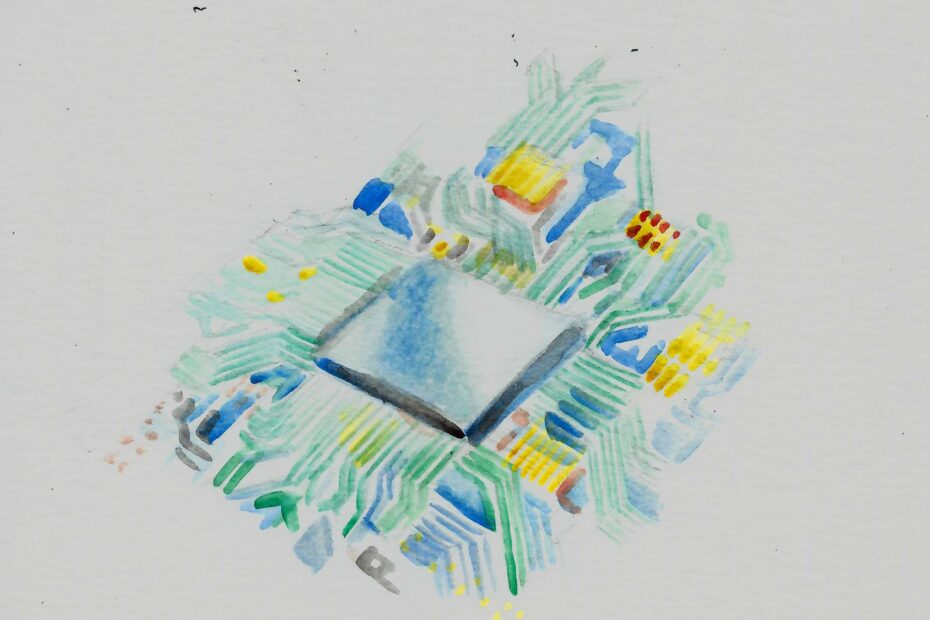If materials were comic book heroes, then graphene would be Superman. A sheet of
carbon — just one atom thick — is over 200 times stronger than steel, transparent, incredibly flexible, and a perfect conductor of heat and electricity.
Now, according to a new Nature article, it could even usurp silicon as the most important element in all modern electronics, from smartphones to the most powerful supercomputers.
Researchers from the Tianjin International Center for Nanoparticles and Nanosystems at Tianjin University in China (TICNN), and the Georgia Institute of Technology in the US were able to make graphene behave as a semiconductor, a material that can alternate between conducting and blocking electricity.
Professor Ma Lei, team co- head and director of the TICNN, says that this breakthrough “can truly make graphene electronics practical in the future.”
In the last century, silicon proved quintessential to the development of modern electronics because of its ability to regulate the flow of electrons: stopping them or allowing them to pass like a traffic light.
All electronic devices are based on the motion of electrons, tiny, negatively-charged particles that swarm around an atom. Conductors allow electrons to move freely inside the material, while insulators prevent the electrons from moving at all. Semiconductors are special in that they can be “switched” to behave as either an insulator or a conductor.
Think of an atom as a kitchen cabinet. In atoms, electrons must stay within their shelves and can only move back and forth between them. Above the valence shell — the highest “shelf ” within the atom exists the conduction band, which allows electrons to flow between atoms. Imagine two cabinets side by side, with their tops sitting flush: the two units are effectively connected, allowing you to slide an object — your electron — from one cabinet onto the other.
In conductors, the valence band and the conduction band are linked (electrons can move freely to and over the top of both cabinets). In insulators, electrons cannot easily move out of their valence bands and into the conduction band (electrons are stuck in the shelves underneath).
In semiconductors, the valence and conduction bands have a narrow band gap. At low energy, the semiconductor behaves like an insulator: valence electrons cannot escape to the conduction band. However, if you inject energy (i.e. photons) into the atom, its electrons can easily jump onto the conduction band and begin moving between atoms, as in a conductor.
Graphene and other carbon- based materials have long been pursued as an alternative to silicon. The problem with graphene is that it is a perfect conductor: zero band gap with electrons freely travelling around, making it unsuitable for the same applications.
Research has since worked on synthesizing a graphene-based material which does exhibit
this band gap. In 2001 Walter de Heer, Regent’s Professor of Physics at Georgia Tech and co-head of the research team, proposed the possibility that epitaxial graphene, a type of graphene formed by heating silicon carbide crystals, could be used to construct this band gap. The first layer formed by this process, which still remains attached to the crystal, behaves as an insulator. In theory, if this first layer was extracted and then overlaid onto a second sheet of regular, conducting epigraphene, the resulting material would behave as a semiconductor.
Picture leaping over a puddle of mud: with enough speed, you could avoid the slow trudge across the insulating layer and simply jump across.
Over the next two decades, de Heer’s team at Georgia Tech worked with nanoscience researchers at Tianjin University to refine this production technique. A major hurdle was low quality of epigraphene: the insulating layers produced were riddled with imperfections. To resolve this, the researchers employed “quasi- equilibrium annealing,” baking the silicon carbide crystals at a precise series of temperatures to produce a smooth insulating layer. Now, for the first time, scientists were able to implant the band gap in graphene, by welding the insulating and conducting layers together.
“The reason our research is valued is that it can truly make graphene electronics practical in the future and remove the biggest obstacle [to its commercialization],” explains Ma. However, he cautions that graphene still needs to undergo further testing and commercialization: it might take 10- 15 years for it to be able to compete with silicon in the industry.
In addition to replacing silicon, the advent of graphene-based chips would transform all of modern electronics. Graphene is able to conduct electrons along its edges, allowing future chips to no longer contain metal wires. Moreover, the average distance travelled by electrons through graphene is several times the distance in silicon. This allows the electrons to exhibit quantum properties like interference, which has crucial applications in quantum computing.
“To me, this is like a Wright brothers moment,” says de Heer. He notes that planes were “the beginning of a technology that can take people across oceans,” and that the same could happen with graphene-based electronics.

